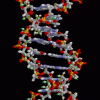
Genes, pathways identified could inform new approaches to treatment
As part of a multinational, collaborative effort, researchers from Canada’s Centre for Addiction and Mental Health (CAMH) have helped identify over 100 locations in the human genome associated with the risk of developing schizophrenia, in what is the largest genomic study published on any psychiatric disorder to date. The findings, published online in Nature, point to biological mechanisms and pathways that may underlie schizophrenia, and could lead to new approaches to treating the disorder, which has seen little innovation in drug development in more than 60 years.
Schizophrenia, a debilitating mental illness that affects approximately one out of every 100 people worldwide, is characterized by hallucinations, delusions, and disordered thinking, and often emerges in the teens and early 20s. Its lifetime impact on individuals and society is high, both in terms of direct health-care and other costs, as well as lost productivity and unemployment, which costs an estimated $6.85 billion a year in Canada.
Medications currently on the market treat only one of the symptoms of the illness (psychosis), and there are no effective treatments for the debilitating cognitive symptoms of schizophrenia. In part, treatment options are limited because the biological mechanisms underlying schizophrenia have not been understood.
Recent research focusing on the genetic underpinnings of schizophrenia has revealed the complexity of the illness. Evidence suggests that it is caused by the combined effects of many genes, and roughly two dozen genomic regions have been found to be associated with schizophrenia. The new study confirms those earlier findings, and expands our understanding of the genetic basis of schizophrenia and its underlying biology. In the genome-wide association study (GWAS) published in Nature, the authors looked at 36,989 genetic samples from schizophrenia patients and 113,075 healthy volunteers and found 108 specific locations in the human genome associated with risk for schizophrenia. Eighty-three of those loci had not previously been linked to the illness.
“Large collaborative efforts such as this one are needed to identify genes that influence complex disorders,” said Dr. Jo Knight, Senior Scientist and Joanne Murphy Professor in Behavioural Science, who spearheaded CAMH’s involvement in this project. “The result is a major advance in understanding the genetic basis of brain functioning in schizophrenia,” said Dr. Knight, who is also Associate Professor of Psychiatry at the University of Toronto.
The Canadian contribution was conducted within CAMH’s Campbell Family Mental Health Research Institute, and CAMH researchers Dr. James Kennedy and Dr. Clement Zai were also on the study team.
The study implicates genes expressed in brain tissue, particularly those related to the functioning of brain cells (neurons) and of the channels enabling chemical and electrical signaling between neurons (synapses). These include genes that are active in pathways controlling synaptic plasticity – a function essential to learning and memory – and pathways governing activity in the target cell receiving signals.
Additionally, the researchers found a smaller number of genes associated with schizophrenia that are active in the immune system. This discovery offers some support for a previously hypothesized link between schizophrenia and immunological processes. The study also found an association between the illness and the region of the genome that holds DRD2 – the gene that produces the dopamine receptor targeted by all approved medications for schizophrenia – suggesting that other loci uncovered in the study may point to additional therapeutic targets.
“The fact that we were able to detect genetic risk factors on this massive scale shows that schizophrenia can be tackled by the same approaches that have already transformed our understanding of other diseases,” said senior author Dr. Michael O’Donovan, deputy director of the MRC Centre for Neuropsychiatric Genetics and Genomics at Cardiff University School of Medicine. “The wealth of new findings has the potential to kick-start the development of new treatments in schizophrenia, a process which has stalled for the last 60 years.”
The study is the result of several years of work by the Schizophrenia Working Group of the Psychiatric Genomics Consortium (PGC), an international, multi-institutional collaboration founded in 2007 to conduct broad-scale analyses of genetic data for psychiatric disease. A total of 55 datasets from more than 40 different contributors, including CAMH, was needed to conduct the analysis.
The samples used in this study represent all of the genotyped datasets for schizophrenia that the consortium has amassed to date. The PGC is currently genotyping new samples to further study schizophrenia and additional psychiatric diseases, including autism and bipolar disorder.
Core funding for the Psychiatric Genomics Consortium comes from the U.S. National Institute of Mental Health (NIMH), along with numerous grants from governmental and charitable organizations, as well as philanthropic donations. The Canadian contribution was funded in part by the Canadian Institutes of Health Research grant MOP-115097.
Source of text: Centre for Addiction and Mental Health – CAMH
Original research article:
Schizophrenia Working Group of the Psychiatric Genomics Consortium. Biological
insights from 108 schizophrenia-associated genetic loci. Nature. 2014 Jul
24;511(7510):421-7. doi: 10.1038/nature13595. Epub 2014 Jul 22.
